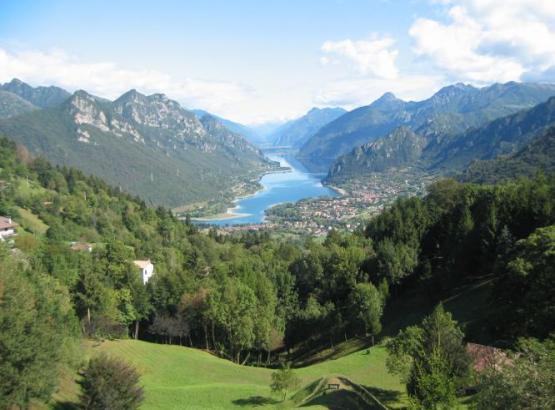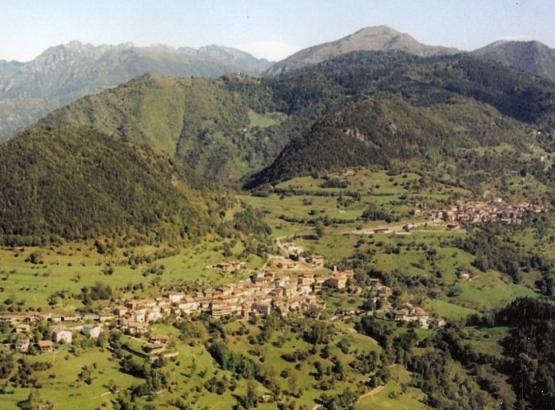Where are we?
The Vestino Valley is an enchanting Brescia valley nestled between Lake Garda and Lake Idro.
The valley is crossed by the stream Toscolano, which flows into Lake Garda, after feeding Lake Valvestino.
The mountains of the Vestino Valley, a purely mountainous area, reach an altitude of 1976 meters above sea level.
The Vestino Valley is located in the heart of the Alto Garda Bresciano Park, an area of extraordinary naturalistic value.
The villages of Vestino Valley
With a surface area of about 50 square kilometres, the Vestino Valley comprises the municipalities of Valvestino (which is divided into several villages) and Magasa.
There are eight charming villages that make up the Vestino Valley.
Armo is known for its impressive forest of wild pines, which still bear the signs of the ancient practice of resination. Wanted by the Austrians at the beginning of 1900 for the production of pitch and turpentine, the forest embraces and protects the small village.
Bollone is the largest village in the Vestino Valley. From the central square unravel the narrow ancient streets, which give visitors all their characteristic beauty. The church of San Michele Arcangelo preserves marvellous stained-glass windows of fine workmanship.
Cadria, on the other hand, is the smallest and most isolated village in the Vestino Valley. Ancient Celtic settlement, it is perhaps the most picturesque town in the valley. The little church dedicated to San Lorenzo is certainly worth a visit.
Cima Rest is a plateau at an altitude of 1200 meters watched over by Mount Tombea, which stands opposite. The ancient barns of this village are really characteristic: ancient houses with a thatched roof, today unique in the world. Here you will find the Ethnographic Museum of Val Vestino and the Astronomical Observatory.
Magasa is the most populated village in the Vestino Valley. Its main feature is the territory, a true natural oasis of the Alto Garda Bresciano Park. A curiosity: this village houses a statue dedicated to women’s work.
Moerna is the first village in the Vestino Valley. to be encountered coming from Valle Sabbia. The Colle di San Rocco, which stands right in front of the village, is the most beautiful and picturesque viewpoint in the valley. The Don Pietro Porta Botanical Museum and the churches of San Bartolomeo and San Rocco are also worth a visit.
People is the nerve center of the paths of the Vestino Valley.. Of particular interest are the Milk Museum and the church of San Matteo.
Turano, the municipal seat of the municipality of Valvestino, has always been the meeting place for representatives of the villages of the valley. Located near the main roads and dominated by the church of San Rocco, this village consists of the central square and three streets characterized by magnificent vaulted passages. The church dedicated to the Martyrdom of St. John the Baptist dates back to before the year one thousand.
Sports and free time
The Vestino Valley. is the destination of many fans of road cycling, off-road cycling and trekking.
There are really numerous and fascinating routes that this valley has to offer. Different in length, difficulty and theme, visitors to the Vestino Valley. will certainly not get bored!
Cultural sites
The Vestino Valley is home to many places of cultural interest.
The Route of the production chain of Tombea and the Route of the Bean of Valvestino accompany visitors to discover two typical products of Val Vestino.
The numerous churches, more or less wide, contain works of inestimable historical and artistic value, as well as religious.
The old Venetian sawmill dating back to 1913 has recently been restored, as has the old water mill. A visit to the ancient lime kiln is part of the educational projects of the Val Vestino Eco-museum.
In addition, you can not fail to visit at least one of the many museums that this area offers.
From the Astronomical Observatory of Cima Rest, a paradise for experts and beginners, you can observe the stars without being disturbed by air pollution and lights.
Typical products
Val Vestino can delight even the most demanding palates with its gastronomic products.
The beans from Val Vestino, the Tombea cheese, the polenta cusa and the “spiedo" deserve a special mention.
The events
The historical re-enactment of the Austro-Hungarian period takes place every year in summer and takes us back to the time of Princess Sissi.
During the Christmas period, the Christmas markets offer the opportunity to buy characteristic gifts to young and old.
.jpg)

.jpg)


